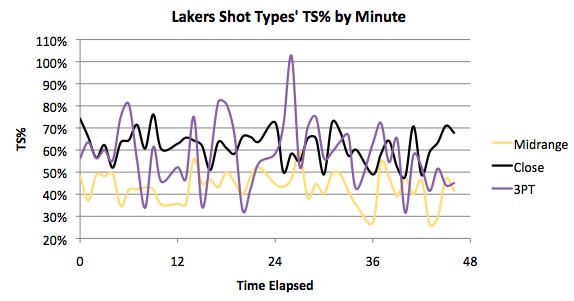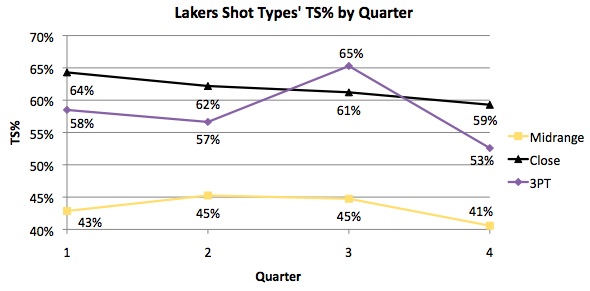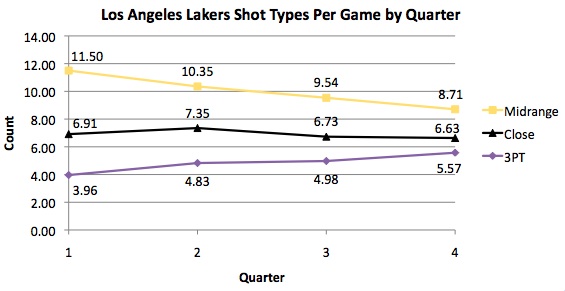In my last article I took a look at how the Lakers mix up their shot attempts as games progress. After posting my results at the APBRmetrics board, a common request was take a look at the efficiency of these different shot types. Today, I will do just that using True Shot Percentage.
Using the same data and same methods as always, I’ve calculated the true shot percentage for the Lakers for each shot type. This data was divided into each of a game’s 48 minutes, and the average results for all games are displayed below:

Midrange shots are generally the least efficient, and close shots are generally the most efficient. However, the efficiency of three-point attempts for the Lakers fluctuates wildly. This graph is a bit too hectic to make any sense of, so I’ve also broken the data down by quarter:

This graph makes things much clearer. Again, midrange/post shots consistently give you the least bang for your buck (although we can’t ignore their hidden positive effects). For the Lakers, they are most efficient in the middle two quarters. Close range shots are the most efficient for the Lakers in every quarter except for the third, in which three-point attempts reign supreme. Of course, we can’t ignore the effects that each shot type may have on the others.
The other significant trend is that, for the Lakers, all shot types are less efficient in the fourth quarter than they are in the first. Close range shots are consistently harder to convert, midrange shots rise then fall, and three-point shots bounce around pretty wildly.
What happens when we compare the efficiency of these shots to their attempts? As a reminder, here is the graph showing their attempts per quarter:

Midrange shots are the most common attempt throughout despite being the least efficient. I would imagine Lakers players and coaches aren’t stupid, so there must be hidden benefits to these attempts. However, it’s clear that as the game goes on the Lakers move from a less optimal shot type distribution to a more optimal one. Also, for what it’s worth, the decline in midrange shot attempts is smallest when they are shooting them the most efficiently. Meanwhile, the Lakers shoot three-pointers the best in the third quarter and consequentially have the highest increase in attempts in the fourth.
The next step is to explore similar ideas with other teams, perhaps ones that are stylistically different than the Lakers. Also, it would be interesting to see these results for individual players.